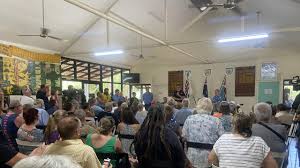A Fast-Track Planning System at the Expense of Democracy
On 27 August 2025, the Minister for Lands, Planning and Environment issued a declaration under section 11(3) of the Planning Act 1999, exempting certain classes of planning scheme amendments from public exhibition. The declaration is here: Declaration under section 11(3) – Class of Amendments (PDF): https://nt.gov.au/__data/assets/pdf_file/0005/1555394/declaration-under-section-11-3-of-the-planning-act-1999-class-of-amendments.pdf
The declaration states that the amendments listed in its Schedule are “not so significant as to require exhibition.” On paper, these include what look like harmless “housekeeping” changes. But when combined with the recommendations of the Approvals Fast Track Taskforce, the implications are much wider.
1. The Declared “Not Significant” Amendments
The Schedule exempts from exhibition:
– Minor technical corrections – fixing typos, formatting, numbering, or cross-referencing mistakes.
– Mapping adjustments – correcting cartographic errors or aligning zone boundaries with cadastral data (but not changing zoning intent).
– Duplication removal – deleting redundant provisions already covered elsewhere in the Scheme.
– Updated references – replacing outdated references to repealed laws, renamed agencies, or standards.
– Low-risk amendments recommended by the Approvals Fast Track Taskforce – the most concerning, because “low-risk” is undefined and open to interpretation.
At first glance, many of these sound trivial. But even small shifts (like “corrections” to a map boundary) can materially affect land use. And the inclusion of Taskforce categories expands the exemption well beyond mere errors.
2. The Approvals Fast Track Taskforce
The Taskforce was created in 2024 to halve regulatory approval timeframes and “say yes to business.” Chaired by industry leaders, it produced a 2025 report with 70 recommendations, nearly all adopted by government. Its underlying philosophy is that consultation, duplication and oversight are “red tape” that slows down development.
By importing Taskforce language into the Planning Act, the Minister has effectively codified that philosophy: if a change can be labelled “low-risk,” it can bypass exhibition entirely.
3. Ministerial Discretion with No Appeal
The Planning Act does not define “not significant.” The Minister’s opinion is decisive.
– Residents have no right of appeal if the Minister designates an amendment “low-risk.”
– Judicial review is the only option — costly and limited to procedure, not merits.
– This hands extraordinary discretion to the Minister, sidelining the Development Consent Authority and Planning Commission.
4. The Territory Coordinator – Major Projects Fast-Tracked
The new Territory Coordinator, created under the Territory Coordinator Act 2025, can designate Territory Development Areas and issue exemption notices to remove projects from normal planning or environmental assessment.
Together with the s.11(3) declaration, this creates a dual system:
– Minor/low-risk changes: quietly processed without exhibition.
– Major/strategic projects: fast-tracked by the Territory Coordinator.
In both cases, community voices are sidelined.
5. Other Fast-Track Measures
This agenda is consistent with broader moves:
– Plans to abolish third-party merit appeals, removing residents’ ability to challenge approvals.
– Proposed sacred site reforms, weakening Aboriginal heritage protections.
– Long-standing reliance on staged approvals and ministerial exemptions.
All are presented as “efficiency” but together they dismantle the checks and balances that once safeguarded the public interest.
6. The Fast-Track Triangle
We can now see a fast-track triangle:
– Approvals Fast Track Taskforce – policy driver reframing consultation as red tape.
– s.11(3) declaration – legal tool exempting amendments from exhibition.
– Territory Coordinator – institutional mechanism to override processes for big projects.
Each part reinforces the other, creating a planning system where executive discretion dominates and community participation shrinks.
Call to Action
Residents and advocacy groups should demand:
1. Clear statutory criteria for what is “low-risk” or “not significant.”
2. Baseline consultation even for technical corrections.
3. Independent oversight of the Territory Coordinator’s exemption powers.
4. Retention of third-party appeal rights.
Without these safeguards, NT planning risks becoming little more than a development approvals machine, with democracy sidelined in favour of administrative speed.
